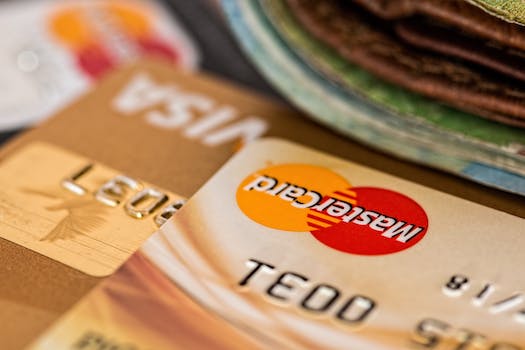How To Save Money Better
Introduction

Introduction: Saving money is an essential aspect of financial planning. It helps you to achieve your financial goals, build an emergency fund, and secure your future. However, saving money can be challenging, especially if you don’t have a plan or strategy in place. In this article, we will discuss some tips on how to save money better and achieve your financial goals.
10 Simple Ways to Cut Your Monthly Expenses
Saving money is a goal that many people have, but it can be difficult to know where to start. Fortunately, there are many simple ways to cut your monthly expenses and start saving more money. Here are 10 tips to help you save money better.
1. Create a budget
The first step to saving money is to create a budget. This will help you see where your money is going and identify areas where you can cut back. Start by listing all of your monthly expenses, including rent or mortgage, utilities, groceries, and entertainment. Then, compare your expenses to your income and see where you can make adjustments.
2. Cut back on eating out
Eating out can be a major expense, especially if you do it frequently. Try to limit your restaurant visits and cook more meals at home. This will not only save you money, but it can also be healthier.
3. Use coupons and discounts
Coupons and discounts can help you save money on everything from groceries to clothing. Look for coupons online or in your local newspaper, and take advantage of sales and discounts whenever possible.
4. Cancel subscriptions you don’t use
If you have subscriptions to magazines, streaming services, or other services that you don’t use, cancel them. This will save you money each month and help you declutter your life.
5. Use public transportation
If you live in an area with good public transportation, consider using it instead of driving. This can save you money on gas and car maintenance, and it’s better for the environment.
6. Shop around for insurance
Insurance can be a major expense, but you may be able to save money by shopping around. Compare rates from different providers and see if you can get a better deal.
7. Cut back on energy usage
Reducing your energy usage can help you save money on your utility bills. Turn off lights and electronics when you’re not using them, and consider using energy-efficient appliances and light bulbs.
8. Buy generic brands
Generic brands can be just as good as name-brand products, but they’re often much cheaper. Try buying generic versions of your favorite products and see if you notice a difference.
9. Use cash instead of credit cards
Using cash instead of credit cards can help you avoid overspending and keep better track of your expenses. Try using cash for your everyday purchases and see if it helps you save money.
10. Plan ahead for big expenses
If you know you’ll have a big expense coming up, like a vacation or a home repair, start planning for it in advance. This will help you avoid taking on debt and ensure that you have enough money saved up to cover the expense.
Saving money can be challenging, but it’s an important goal to work towards. By following these simple tips, you can cut your monthly expenses and start saving more money. Remember to be patient and persistent, and don’t be afraid to make adjustments to your budget as needed. With a little effort, you can achieve your financial goals and enjoy a more secure future.
The Ultimate Guide to Couponing for Beginners
Are you tired of constantly feeling like you’re living paycheck to paycheck? Do you want to start saving money but don’t know where to begin? Look no further than couponing! Couponing is a great way to save money on everyday items and can even lead to significant savings on larger purchases. In this ultimate guide to couponing for beginners, we’ll cover everything you need to know to start saving money better.
First and foremost, it’s important to understand the different types of coupons available. Manufacturer coupons are issued by the company that produces the product and can be found in newspapers, magazines, and online. Store coupons are issued by the retailer and can often be found in their weekly ads or on their website. Finally, digital coupons can be found on various couponing apps and websites.
Once you’ve familiarized yourself with the different types of coupons, it’s time to start collecting them. One of the easiest ways to do this is by subscribing to your local newspaper. Many newspapers offer discounted rates for new subscribers, making it an affordable way to access a variety of manufacturer coupons. Additionally, be sure to sign up for loyalty programs at your favorite stores. These programs often offer exclusive coupons and discounts to members.
Now that you have a collection of coupons, it’s important to stay organized. One way to do this is by using a coupon binder. This can be as simple as a three-ring binder with dividers or as elaborate as a specially designed coupon organizer. The key is to have a system that works for you and allows you to easily find the coupons you need when you need them.
When it comes to using your coupons, timing is everything. Keep an eye on sales and promotions at your favorite stores and try to match them up with your coupons for maximum savings. Additionally, don’t be afraid to stack coupons. Many stores allow you to use both a manufacturer coupon and a store coupon on the same item, leading to even greater savings.
Another great way to save money through couponing is by taking advantage of rebate offers. These offers typically require you to purchase a specific product and then submit a form and proof of purchase to receive a rebate check in the mail. While it may take a bit of extra effort, the savings can be significant.
Finally, don’t forget about online couponing. There are a variety of websites and apps that offer digital coupons and promo codes for online shopping. Additionally, many retailers offer exclusive discounts to their email subscribers, so be sure to sign up for their mailing lists.
In conclusion, couponing is a great way to save money on everyday items and can even lead to significant savings on larger purchases. By familiarizing yourself with the different types of coupons, staying organized, and timing your purchases strategically, you can start saving money better today. So what are you waiting for? Start clipping those coupons and watch your savings grow!
How to Create a Budget and Stick to It
Saving money is a goal that many people have, but it can be difficult to achieve without a plan. One of the best ways to save money is by creating a budget and sticking to it. In this article, we will discuss how to create a budget and provide tips on how to stick to it.
The first step in creating a budget is to determine your income. This includes any money you receive from your job, investments, or other sources. Once you have determined your income, you need to calculate your expenses. This includes everything from rent or mortgage payments to groceries and entertainment.
Once you have determined your income and expenses, you can create a budget. Start by listing all of your expenses and categorizing them. For example, you may have categories for housing, transportation, food, and entertainment. Next, assign a dollar amount to each category based on your income and expenses.
It is important to be realistic when creating your budget. If you allocate too much money to one category, you may not have enough money for other expenses. On the other hand, if you allocate too little money to a category, you may not be able to cover your expenses.
Once you have created your budget, it is important to stick to it. One way to do this is by tracking your expenses. Keep a record of everything you spend money on and compare it to your budget. This will help you identify areas where you may be overspending and make adjustments as needed.
Another way to stick to your budget is by setting goals. For example, you may want to save a certain amount of money each month or pay off a credit card debt. By setting goals, you will have a clear idea of what you are working towards and be more motivated to stick to your budget.
It is also important to be flexible with your budget. Unexpected expenses can arise, and it is important to have a plan for how to handle them. This may mean adjusting your budget for the month or finding ways to cut back on other expenses.
One way to save money is by finding ways to reduce your expenses. This may include cutting back on eating out, finding cheaper alternatives for entertainment, or negotiating bills with service providers. By reducing your expenses, you will have more money to put towards your savings goals.
In addition to reducing your expenses, it is important to find ways to increase your income. This may include taking on a side job or finding ways to earn passive income. By increasing your income, you will have more money to put towards your savings goals and be able to achieve them faster.
In conclusion, creating a budget and sticking to it is one of the best ways to save money. By determining your income and expenses, creating a budget, tracking your expenses, setting goals, being flexible, reducing your expenses, and increasing your income, you can achieve your savings goals and improve your financial situation. Remember, saving money takes time and effort, but it is worth it in the end.
5 Money-Saving Tips for Grocery Shopping
Grocery shopping is a necessary expense for everyone, but it doesn’t have to break the bank. With a few simple tips and tricks, you can save money on your grocery bill without sacrificing the quality of your meals. Here are five money-saving tips for grocery shopping.
1. Make a list and stick to it
One of the easiest ways to overspend at the grocery store is to go in without a plan. Before you head to the store, make a list of the items you need and stick to it. This will help you avoid impulse purchases and ensure that you only buy what you need. If you’re not sure what to put on your list, try planning your meals for the week ahead of time. This will help you determine what ingredients you need and prevent you from buying items that will go to waste.
2. Shop the sales
Most grocery stores have weekly sales on certain items. Take advantage of these sales by planning your meals around them. For example, if chicken is on sale, plan to make a few meals that include chicken that week. You can also stock up on non-perishable items when they’re on sale, like canned goods or pasta. Just be sure to check the expiration dates before you buy in bulk.
3. Buy generic
Brand-name products are often more expensive than their generic counterparts, but they’re not always better. In fact, many generic products are made by the same companies that produce the brand-name versions. Try buying generic versions of items like cereal, canned goods, and cleaning supplies. You may be surprised at how much you can save without sacrificing quality.
4. Use coupons
Coupons are a great way to save money on groceries, but they can be time-consuming to find and organize. Luckily, there are many websites and apps that make it easy to find and use coupons. Some grocery stores even have their own apps that allow you to clip digital coupons and apply them at checkout. Just be sure to read the fine print and check the expiration dates before using any coupons.
5. Shop in season
Produce that’s in season is often cheaper and fresher than produce that’s out of season. Try to plan your meals around seasonal produce and buy in bulk when it’s on sale. You can also freeze or can excess produce to use later in the year. Not only will you save money, but you’ll also be supporting local farmers and reducing your carbon footprint.
In conclusion, saving money on groceries doesn’t have to be difficult. By making a list, shopping the sales, buying generic, using coupons, and shopping in season, you can save money without sacrificing the quality of your meals. With a little planning and effort, you can make your grocery budget go further and put more money back in your pocket.
The Benefits of Meal Planning for Your Wallet
Are you tired of constantly overspending on groceries and eating out? Do you want to save money but don’t know where to start? One simple solution is meal planning. Not only does it save you money, but it also saves you time and reduces food waste. Here are some benefits of meal planning for your wallet.
Firstly, meal planning allows you to create a grocery list and stick to it. When you go to the grocery store without a plan, you are more likely to buy unnecessary items and overspend. However, when you plan your meals for the week, you can create a list of only the ingredients you need. This not only saves you money but also reduces food waste as you are only buying what you will use.
Secondly, meal planning allows you to take advantage of sales and discounts. By planning your meals in advance, you can check the weekly flyers and see what items are on sale. You can then incorporate those items into your meal plan and save money. Additionally, buying in bulk can also save you money in the long run. For example, if chicken breasts are on sale, you can buy a large pack and freeze the extras for future meals.
Thirdly, meal planning reduces the need for eating out. Eating out can be expensive, especially if you do it frequently. However, when you plan your meals in advance, you can prepare meals at home and bring them to work or school. This not only saves you money but also allows you to have healthier meals as you have control over the ingredients and portion sizes.
Fourthly, meal planning allows you to use up leftovers. Instead of throwing away leftovers, you can incorporate them into your meal plan for the week. For example, if you have leftover chicken from dinner, you can use it in a salad for lunch the next day. This not only reduces food waste but also saves you money as you are not buying additional ingredients for that meal.
Lastly, meal planning allows you to be creative with your meals. Instead of buying the same ingredients every week, you can try new recipes and incorporate different ingredients. This not only adds variety to your meals but also allows you to use up ingredients that you may have forgotten about in your pantry or fridge.
In conclusion, meal planning is a simple and effective way to save money. By creating a grocery list, taking advantage of sales and discounts, reducing the need for eating out, using up leftovers, and being creative with your meals, you can save money and reduce food waste. So, the next time you go grocery shopping, try meal planning and see the benefits for yourself. Your wallet (and stomach) will thank you.
DIY Home Repairs to Save Money on Maintenance
Are you tired of spending a fortune on home repairs and maintenance? Do you want to save money and learn how to fix things yourself? Well, you’re in luck! DIY home repairs can save you a lot of money in the long run. Not only will you save money on labor costs, but you’ll also gain valuable skills that can be used for future repairs. Here are some tips on how to save money better by doing your own home repairs.
Firstly, start with small repairs. Don’t jump into a big project right away. Start with something simple like fixing a leaky faucet or replacing a light switch. These small repairs are easy to do and can save you a lot of money in the long run. You can find tutorials online or in DIY books that will guide you through the process step-by-step.
Secondly, invest in some basic tools. You don’t need to buy expensive tools, but having a few basic ones will make your DIY repairs much easier. A hammer, screwdriver, pliers, and a wrench are all essential tools that you’ll need for most repairs. You can also invest in a power drill, which will make drilling holes and driving screws much easier.
Thirdly, learn how to do basic electrical work. Electrical work can be intimidating, but it’s actually quite simple once you understand the basics. You can learn how to replace a light fixture, install a ceiling fan, or even rewire a switch. Just make sure to turn off the power before you start any electrical work and follow all safety precautions.
Fourthly, learn how to do basic plumbing. Plumbing repairs can be expensive, but they’re actually quite simple to do yourself. You can learn how to fix a leaky faucet, replace a toilet, or even install a new sink. Just make sure to turn off the water supply before you start any plumbing work and follow all safety precautions.
Fifthly, maintain your home regularly. Regular maintenance can prevent costly repairs down the road. Make sure to clean your gutters, replace air filters, and check for leaks regularly. By doing these simple tasks, you can save money on repairs and keep your home in good condition.
Lastly, don’t be afraid to ask for help. If you’re not sure how to do a repair, ask a friend or family member for help. You can also hire a professional for more complex repairs. Just make sure to get multiple quotes and choose a reputable contractor.
In conclusion, DIY home repairs can save you a lot of money in the long run. By starting with small repairs, investing in basic tools, learning how to do basic electrical and plumbing work, maintaining your home regularly, and asking for help when needed, you can save money on repairs and gain valuable skills. So, the next time something breaks in your home, don’t panic. Take a deep breath, grab your tools, and get to work!
Investing for Beginners: How to Grow Your Savings
Saving money is an essential part of financial planning. It is a habit that everyone should cultivate, regardless of their income level. However, saving money is not enough. You need to invest your savings to grow your wealth. Investing can be intimidating, especially for beginners. But with the right knowledge and guidance, anyone can invest their money wisely and achieve their financial goals.
Here are some tips on how to save money better and invest for beginners:
1. Set your financial goals
Before you start investing, you need to set your financial goals. What do you want to achieve with your money? Do you want to save for retirement, buy a house, or start a business? Your financial goals will determine your investment strategy. For example, if you want to save for retirement, you may want to invest in a retirement account like a 401(k) or an IRA.
2. Create a budget
Creating a budget is the first step to saving money. You need to know how much money you have coming in and going out each month. Once you have a clear picture of your finances, you can identify areas where you can cut back on expenses and save more money. You can use online budgeting tools or apps to help you track your spending and stay on top of your finances.
3. Start small
Investing can be overwhelming, especially if you are a beginner. But you don’t have to start big. You can start small and gradually increase your investments as you become more comfortable with the process. You can start with a small amount of money and invest in low-risk investments like mutual funds or exchange-traded funds (ETFs).
4. Diversify your investments
Diversification is key to successful investing. You don’t want to put all your eggs in one basket. You should spread your investments across different asset classes like stocks, bonds, and real estate. This will help you minimize your risk and maximize your returns.
5. Invest for the long-term
Investing is a long-term game. You should not expect to get rich overnight. You need to be patient and stay invested for the long-term. Historically, the stock market has provided higher returns than other investments over the long-term. So, if you are investing for retirement, you should consider investing in stocks.
6. Seek professional advice
Investing can be complex, and it is always a good idea to seek professional advice. You can consult a financial advisor or a certified financial planner (CFP) to help you create an investment plan that aligns with your financial goals and risk tolerance.
In conclusion, saving money is important, but investing your savings is even more critical to achieving your financial goals. By following these tips, you can save money better and invest for beginners. Remember to set your financial goals, create a budget, start small, diversify your investments, invest for the long-term, and seek professional advice. With patience and discipline, you can grow your wealth and achieve financial freedom.
Conclusion
Conclusion: Saving money is an essential aspect of financial planning. By creating a budget, reducing unnecessary expenses, and finding ways to increase income, individuals can save money more effectively. It is also important to have a clear goal in mind and to stay motivated throughout the saving process. With discipline and commitment, anyone can learn how to save money better and achieve their financial goals.







